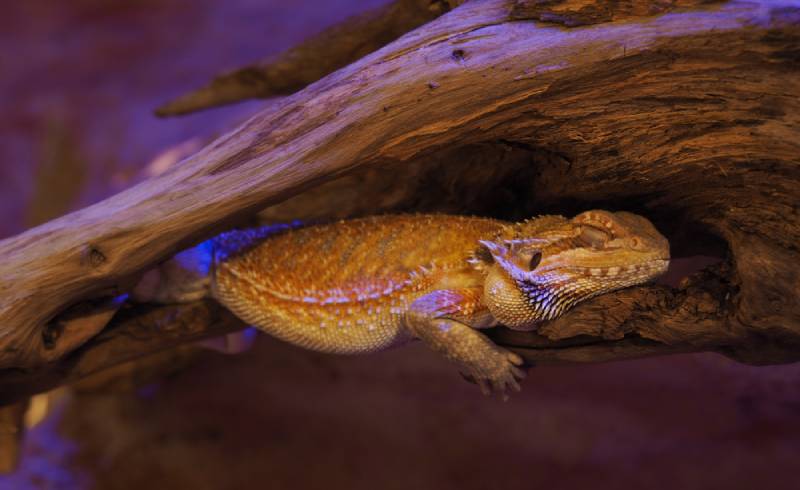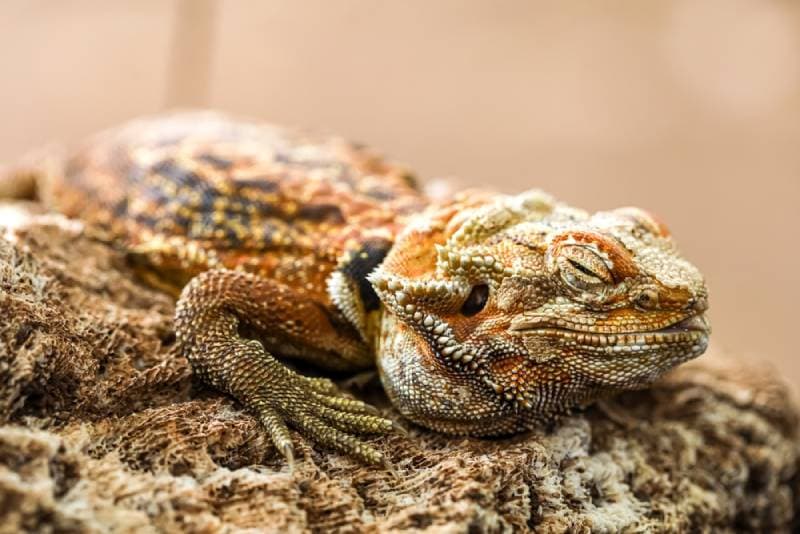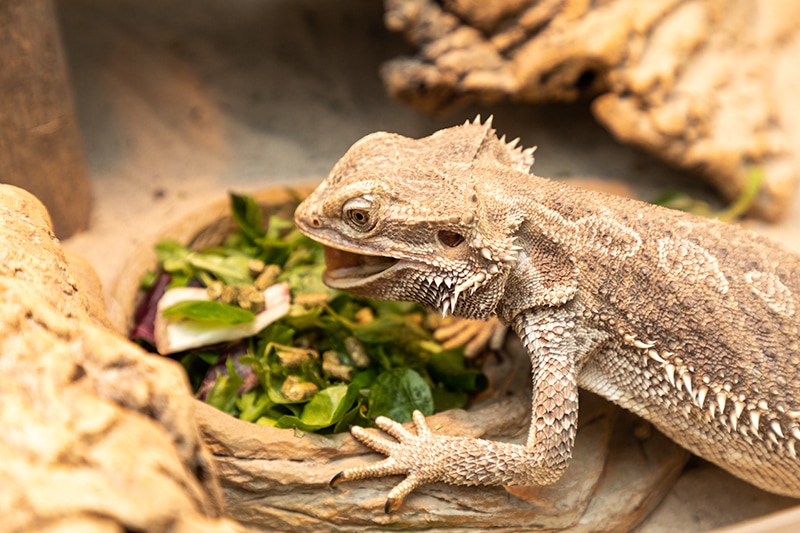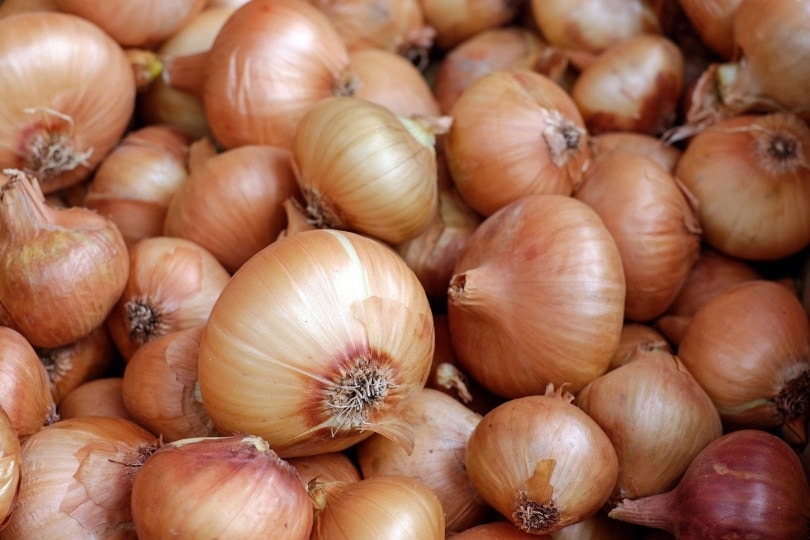Do Bearded Dragons Hibernate? Vet-Reviewed Facts & Brumation Explained
Updated on

Every devoted pet owner has noticed strange behavior in their pets at one point or another. When it comes to Bearded Dragons, you’ve probably noticed a hibernation-like behavior that makes you wonder about the safety of your beloved pet. Before jumping to any conclusions, you should learn about the nature of your adorable lizard and the instinct that stays with them from the wild.
Many Bearded Dragons undergo a hibernation-like state called brumation, allowing them to get through cold winter days. If you suspect your Beardie is brumating, read the several clear signs of this state below and what you can do to ensure your pet’s safety.
What Is Brumation?
Brumation is a state that happens in the colder periods of the year with reptiles such as Bearded Dragons and other cold-blooded animals that live in temperate areas. It is the cold-animal equivalent of hibernation.
Bearded dragons tend to hide under the ground or in other places where they are away from predators amidst the cold weather. This is a survival mechanism that they developed over time to deal with cold climates.
This urge to brumate can occur in Bearded Dragons in captivity too, depending on the weather and temperatures. Brumation in reptiles can last for several weeks. While there are myths that Bearded Dragons under 1-year-old don’t undergo this state, this is not the case. If they sense the need for this behavior, they will use it to protect themselves at any time.

How to Know When Your Bearded Dragon Is in Brumation
- Loss of appetite
- Hiding in shaded areas
- Less frequent bowel movements
- Sleeping more
- Slow movements
As in the wilderness, this behavior also very often happens with pet Bearded Dragons. It’s a hibernation-like state which often causes concern from pet owners. Not to worry—this type of behavior is perfectly normal. The first signs that your Bearded Dragons are probably brumating are they tend to eat less or stop eating altogether.
Other signs are that they tend to sleep more, and when they are not sleeping, they move very slowly. In the wild, during this period, Bearded Dragons would dig a hole or find a place to stay for a few months. That being said, in captivity, they also tend to hide in their hiding spots and minimize interacting with their owners.
Difference Between Brumation, Hibernation, and Estivation
When we think about these types of behavior, the most known is hibernation which is very similar to brumation with some key differences. When we’re talking about hibernation, it is a state that happens to warm-blooded animals in the winter times. This behavior is what we would call a “winter dream,” and it can last from a few days to a few months. The main difference with this process is that animals that undergo hibernation often build up fat reserves before doing so and rely on them to get through hibernation, whereas animals that brumate survive by lowering their metabolic rate instead.
As mentioned above, brumation is a state that happens with cold-blooded animals, which is the crucial difference from hibernation. Cold-blooded animals are the type of animals that can’t regulate their own body temperatures, so they rely on the environment to regulate it for them.
Some of the most famous examples of cold-blooded animals are:
- Reptiles (Lizards, snakes, turtles, crocodiles)
- Amphibians (Frogs, toads, salamanders)
- Insects
Animals who brumate will hide in the ground or the rocks, but if they sense a warmer winter day, they will often get out from their burrows and bask in the sun. Hibernating and brumating aren’t the only types of this behavior—there is also estivation.
Estivation is very similar to these two, but it happens in very warm periods (rather than in cold periods) when animals want to save their energy by decreasing their physiological characteristics. This behavior often happens with animals who live in deserts in the dry seasons.
Tips On Keeping Your Bearded Dragon Safe During Brumation
Suppose you are certain your pet Bearded Dragon is entering the brumation state. In that case, there are several things you can do to ensure its safety. Read the following tips to know exactly what your part is as a devoted lizard parent.
- Provide your Beardie with a safe and shaded area where they can hide when brumating
- If possible, take your Beardie to the vet for a routine check-up before brumation
- Check the heat source to ensure the temperature in the enclosure is perfectly pleasant for your lizard – oftentimes, poor temperature regulation results in pet Beardies opting to brumate.
- Always leave a small water bowl in the terrarium
- If your animal doesn’t want to be handled, leave them resting in the enclosure
- Monitor the hunger of your Bearded Dragon and occasionally offer them food
Final Thoughts
Next time you see your Bearded Dragon acting strange or displaying this behavior, do not worry. This is a sign that your animal is doing something it would be doing in the wild. But if you are still worried, you can always bring your pet Bearded Dragon to your local exotic pet expert for a second opinion.
Featured Photo Credit: Dudley Simpson, Shutterstock











